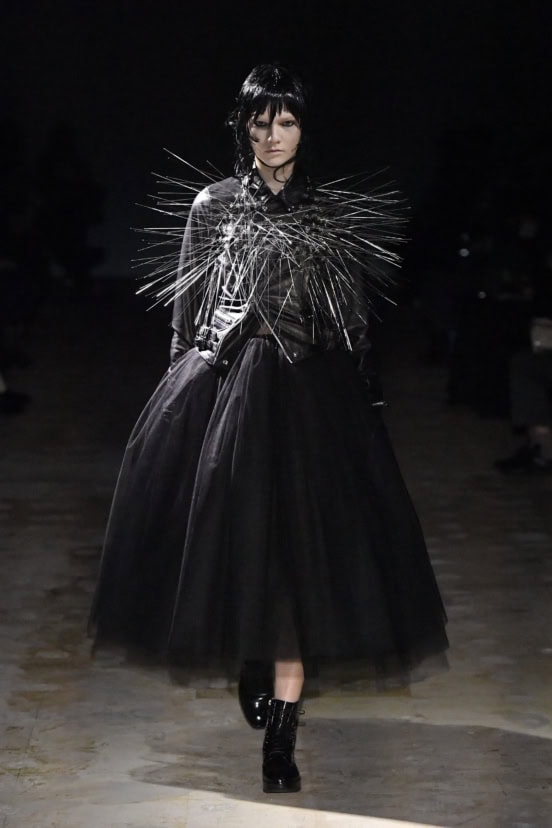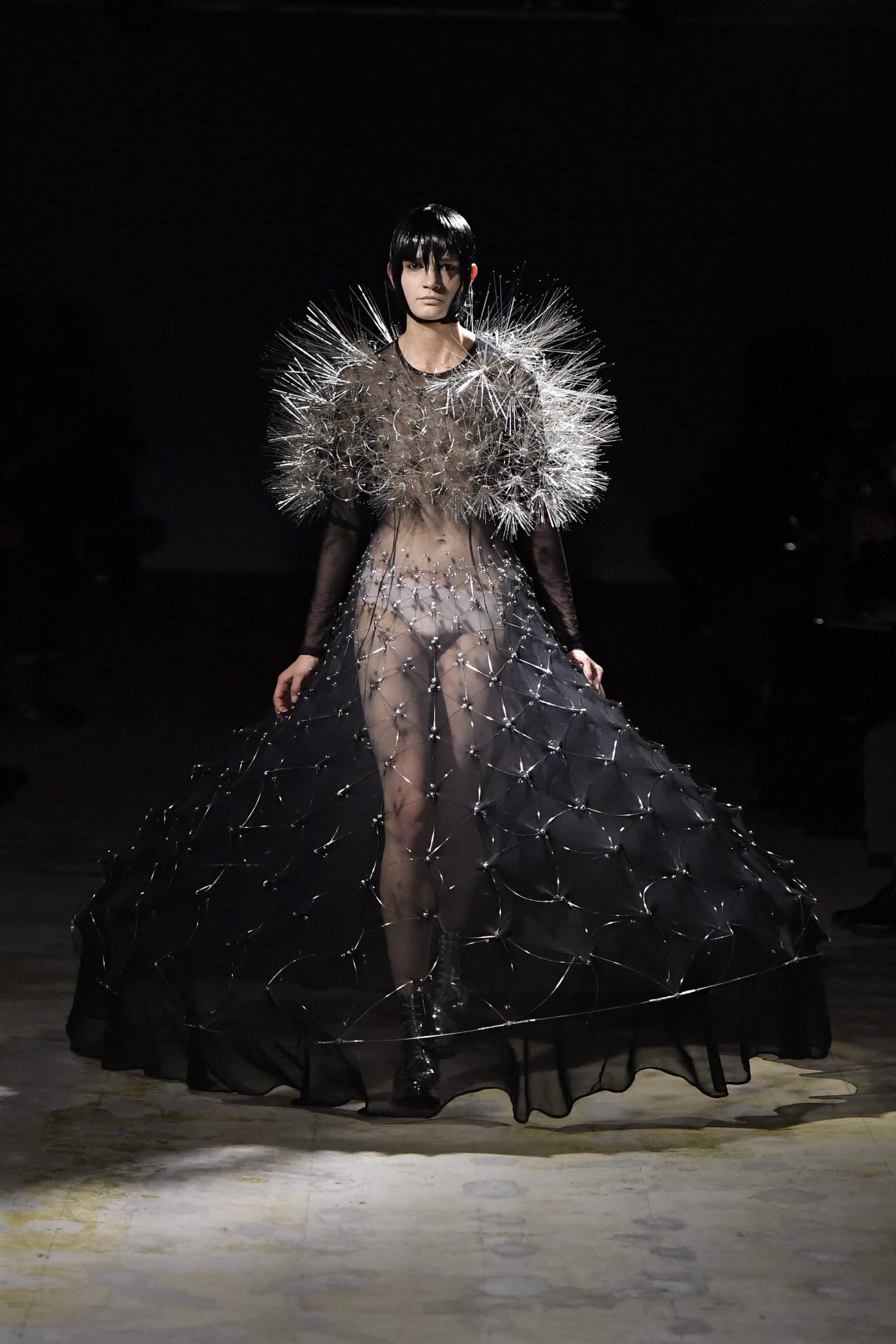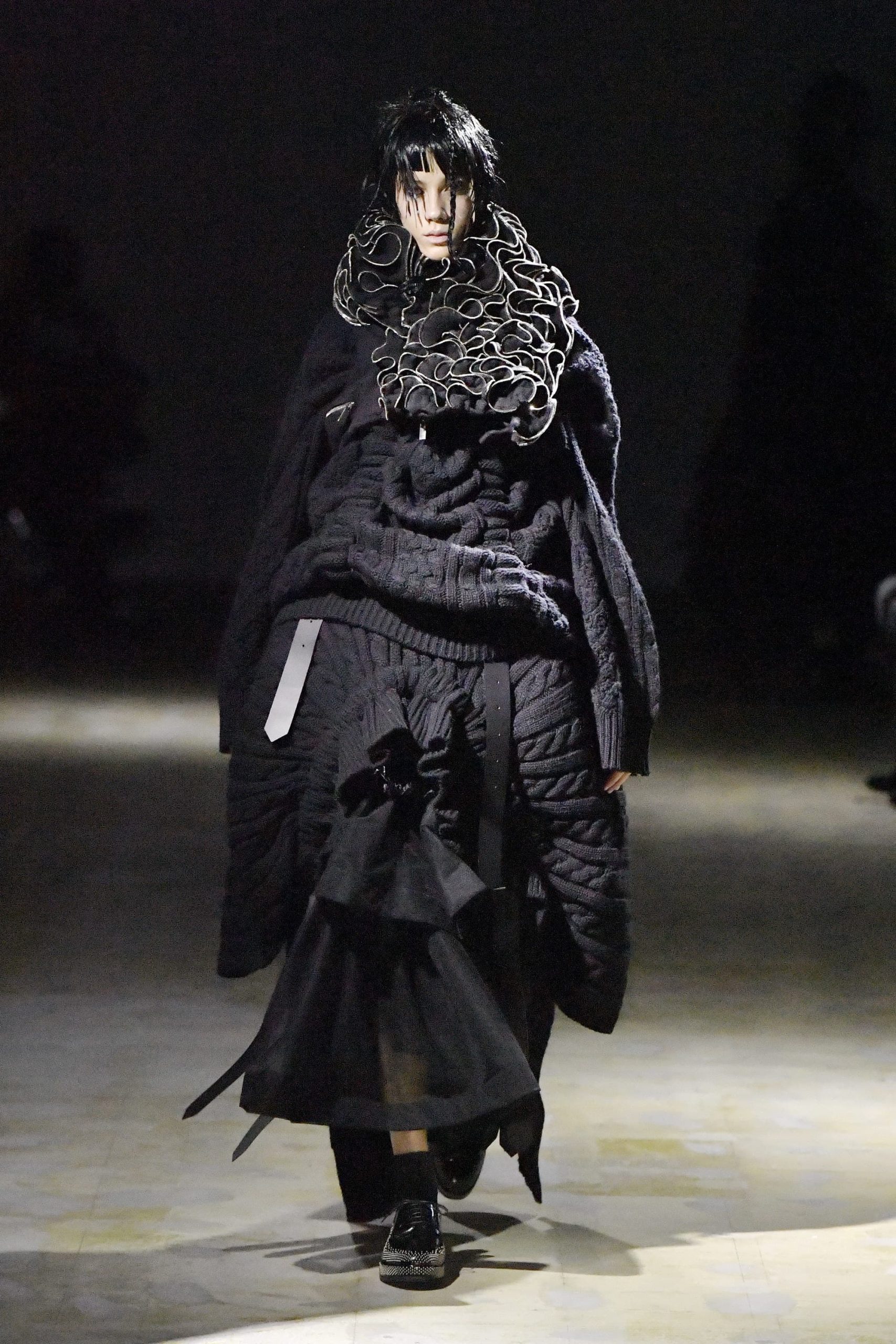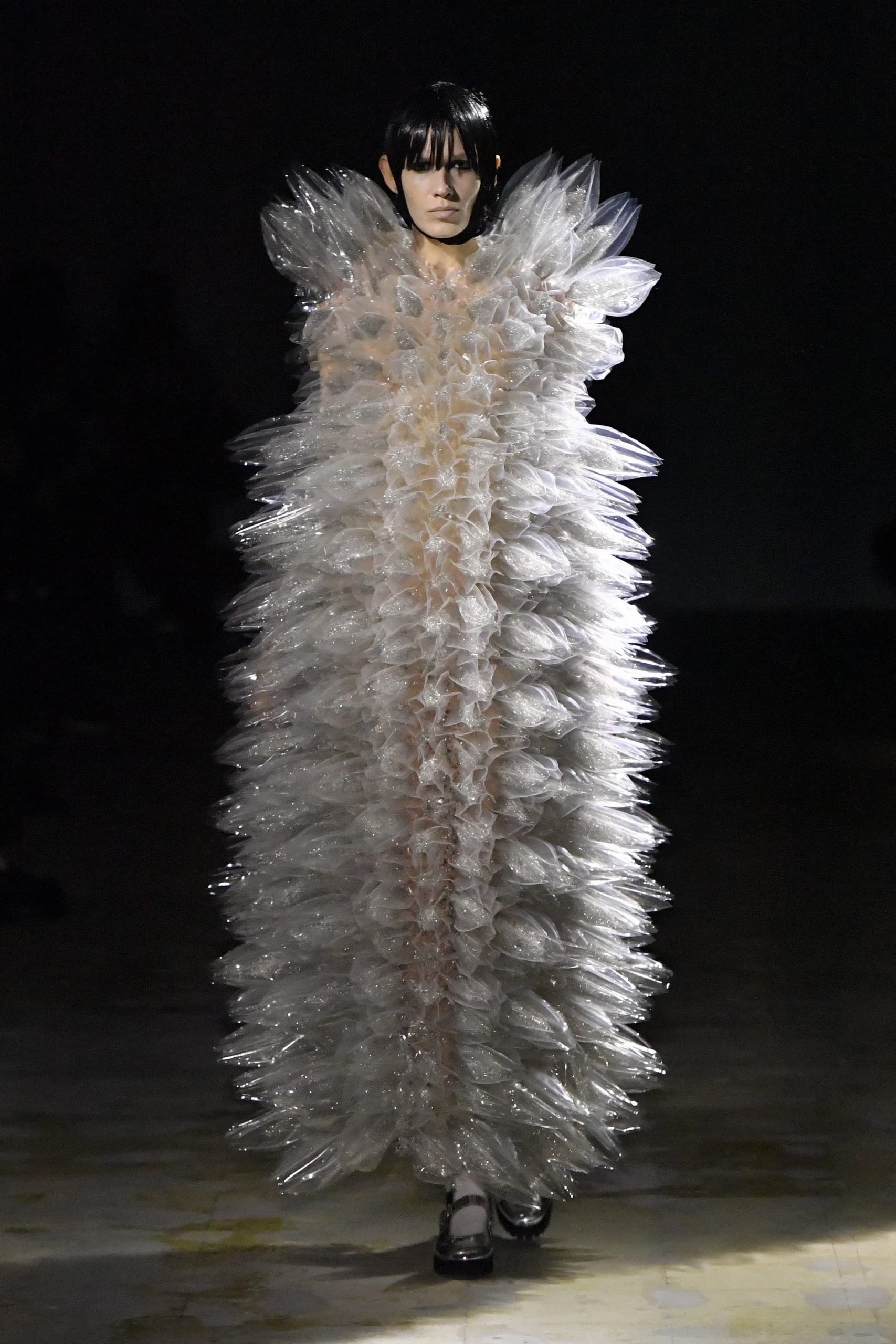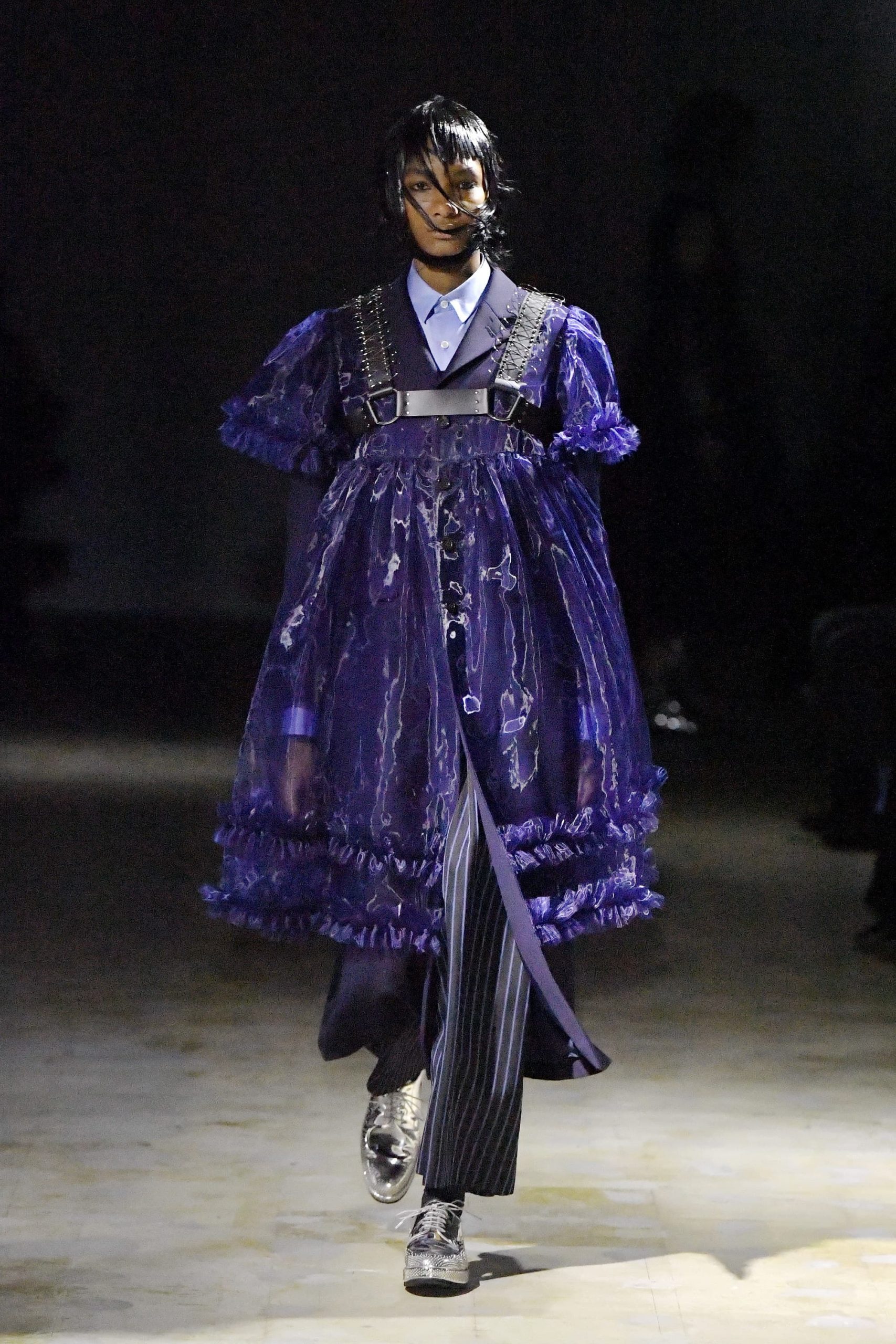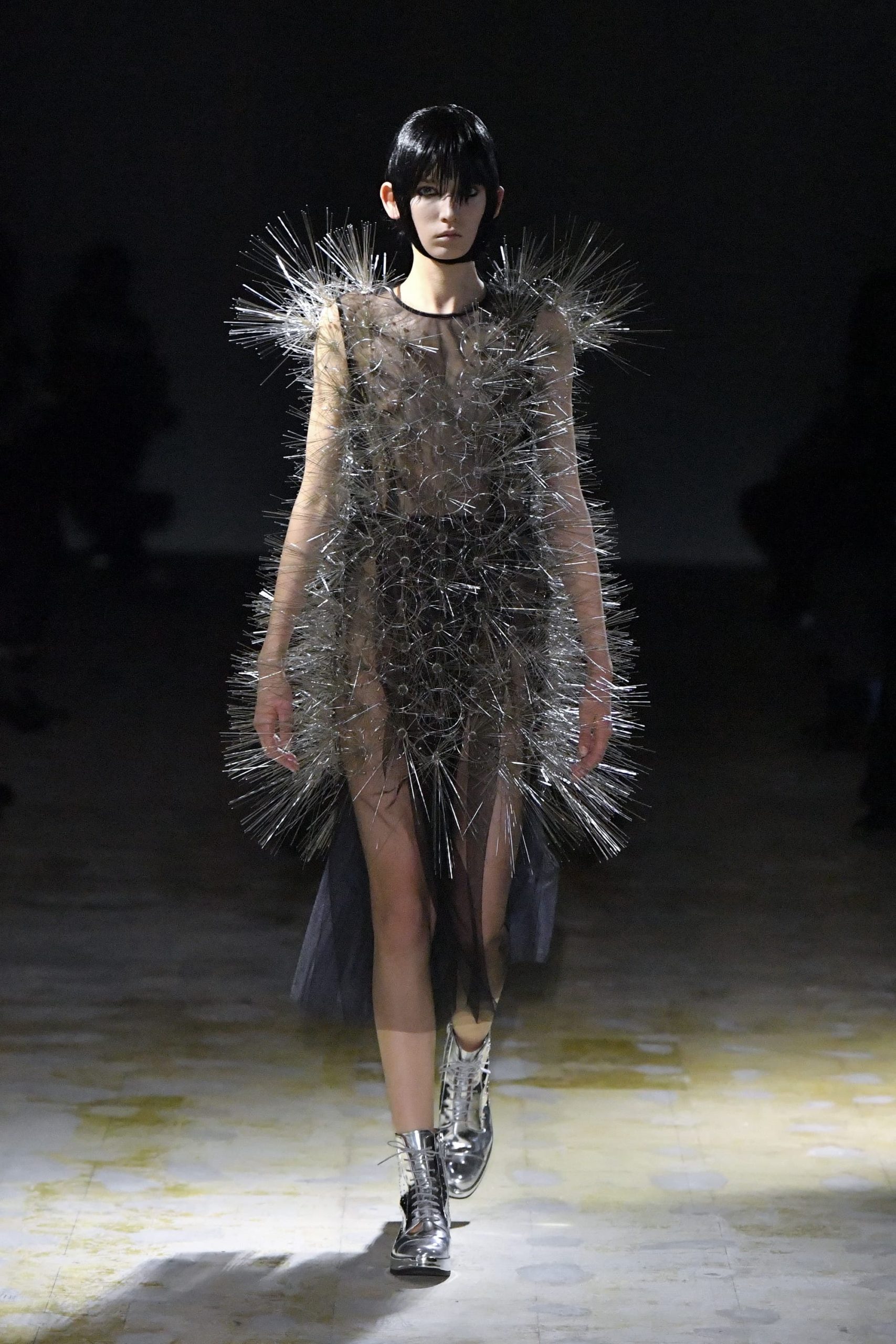Review of Noir Kei Ninomiya Fall 2021 Fashion Show
METAL COUTURE
The Magic of Stainless Steel Wires
By Long Nguyen
Kei Ninomiya is not the kind of fashion designer who works around themes of any sort, literally or figuratively.
While eschewing the notion of inspirations altogether, Ninomiya is especially adept at manipulating the finer aspects of intricate design techniques. He primarily used sew-free, stitch-free constructions in his early shows in Paris since his Fall 2018 show. The designer also has a unique approach to incorporating botanical objects or even the rose flower figures prominently in the elaborate decorations forming sculptural garments cut from sophisticated patterns and innovative assembly methods.
Specialty textile and hand craftsmanship form the core of Ninimiya’s fashion oeuvre.
For this fall collection, Ninomiya deployed the simple stainless steel small wire onto the array of garments that are now his signature looks. The steel wire embellished the black leather biker and large tulle skirts, bubble organza coats, or outer layers of ruffles on a long dress or oversized jacket.
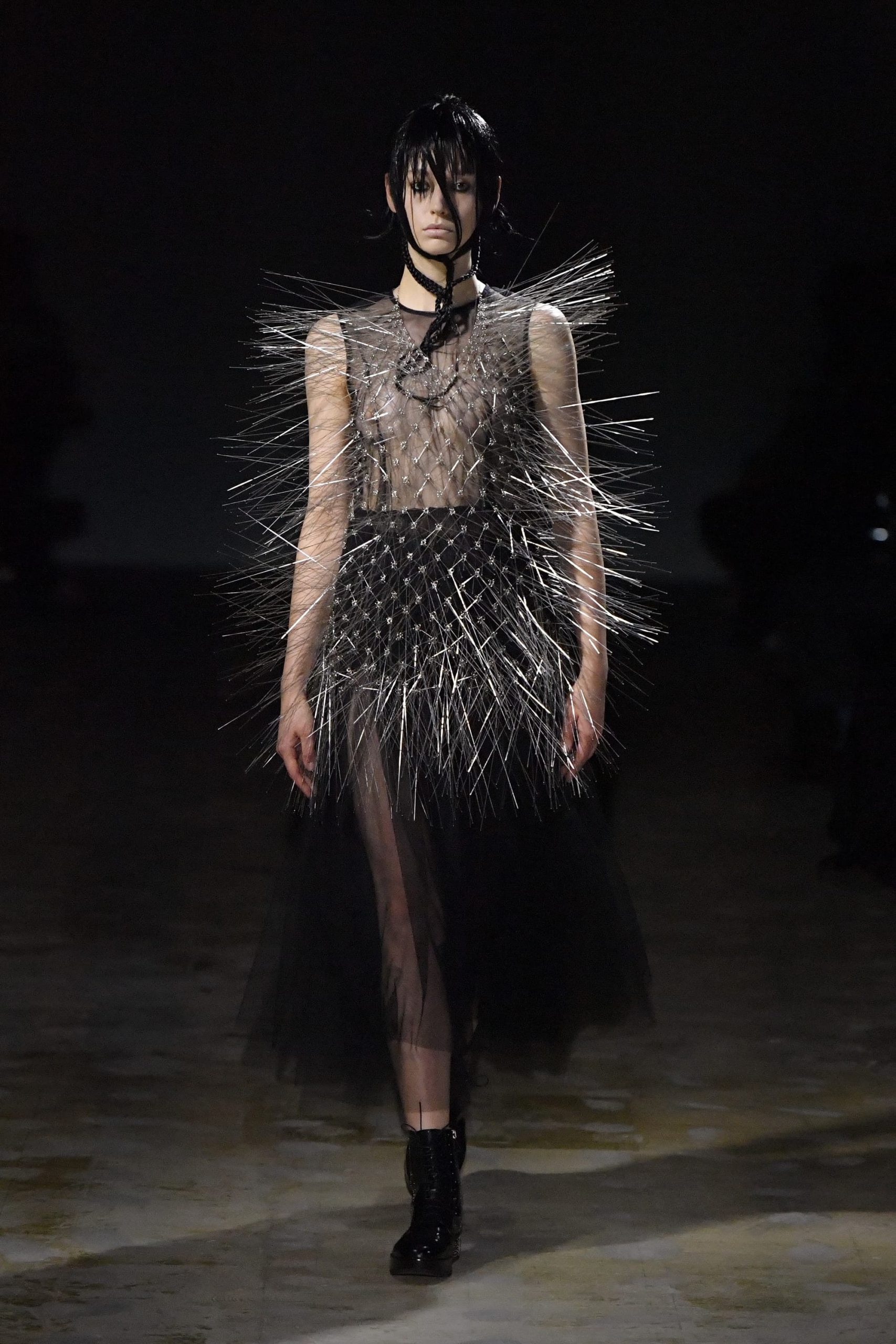
The stainless steel wire offered Ninomiya the opportunity to enhance his treatment of the fabrics and added an element of decoration to his signature silhouettes.
A sheer organza flare dress is now embellished with the silver spike on top like a sea urchin’s body and with a print-like pattern on the skirt. Similarly, a black sheer sheath dress has long steel wires protruding out on all sides. The steel wiring on a black leather bike’s sleeve over a black tulle skirt is the most muscular look in this show.
The sophisticated craft is apparent in merging the steel wire into the fabrics themselves and not as mere adornments.
The wire became the trims of a black ruffle front dress or used as the fabric to knit the oversized crochet type overlay dress or a long sleeve crochet-like sweater atop a layer of black wool dress. Another dress features the topology steel wire connecting the black leather strips framing a coat over a purple dress.
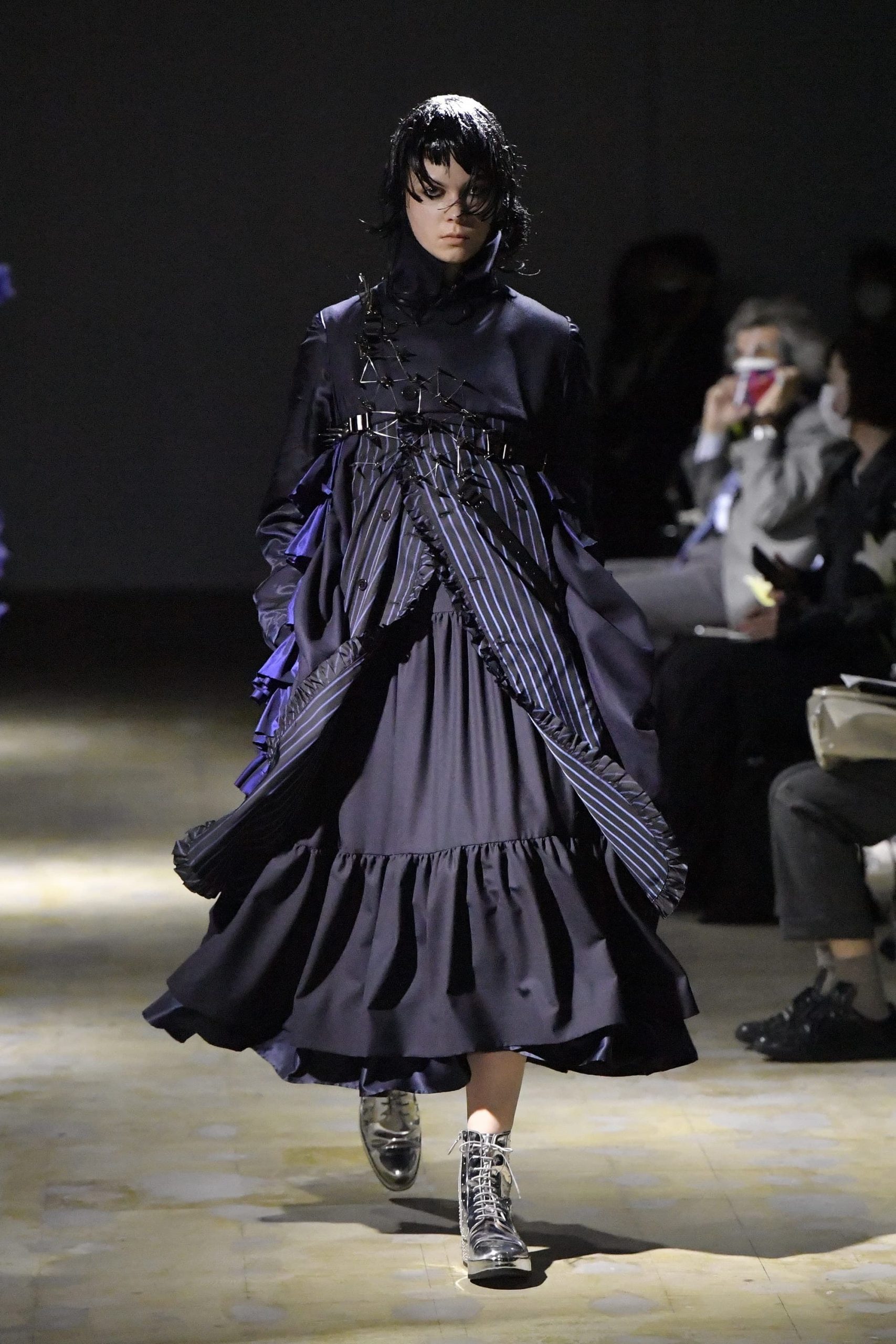
The show demonstrated the process by which Ninomiya initiated the incorporation of the steel wire first as decoration. He merged the wire with the wool, silk, and tulle fabrics, to the last few looks where the steel wires became the sole fabrics. The jacket with dropped sleeves and petal folds skirt, or the previous 3D dress with wire and transparent organza forming a garden of floral bulbs on the crisps of blooming are extraordinary renditions of this transformative process, albeit from the sole point of view of the materials used in this collection.
Underneath these majestic sculptures, there are plenty of real clothes. A navy wool blouse top decorated with ruffles trims to the collar, and a skirt-pant pair, the black leather bikers, a navy wool coat covered with stratified rows of light blue ruffles are examples of actual great commercial clothes.
At times, these clothes hid underneath, say, a giant volume black pressed and folded organza and steel wire 3D coat that sparkled light under the light. The simple navy long jacket with a mix of plain and stripe wools over a navy wool skirt or a navy wool single breast blazer and light blue cotton shirt.
Ninomiya’s hand can transform even the simple material like steel wires into the extraordinary fabric for clothes that defied conventions.
